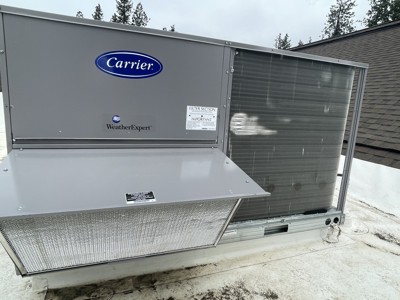We are guessing the early morning cold has been unbearable for you recently, and your furnace has let you down by not heating your space. So you suspect it must be a result of a bad furnace ignitor.
You could be correct because a faulty ignitor causes most furnace problems. But how do you know if the problem is with your furnace ignitor and not with other furnace components?
This article will teach you how to tell if your furnace ignitor is bad and DIY steps to troubleshoot a bad furnace ignitor.
To get started, you should know what the furnace ignitor is and how it works, as well as how to tell when it’s time for maintenance or replacement.
Importance of a Furnace Ignitor
Old furnaces use a pilot light to provide a flame that ignites the gas and initiates the combustion process that heats up your room. However, newer furnace models use an electric ignitor to start the furnace and heat the room.
A furnace ignitor is a crucial component of your furnace system because it generates the heat needed to ignite the furnace’s natural gas supply. Before entering your ductwork, this heat is routed through the HVAC system’s air handler.
If the ignitor is broken or faulty, your electric furnaces will not heat your space or, in extreme cases, will not work at all.
Fortunately, a bad ignitor can be replaced without changing the entire furnace system. Continue reading to find out how to tell if the furnace ignitor is bad.
How to Know You Have a Faulty Furnace Ignitor
When your furnace ignitor fails, it disrupts the smooth operation of your furnace, and you may begin to notice any of the following signs;
Furnace Won’t Ignite
Although a furnace not starting can be caused by various factors such as a faulty circuit breaker. However, if your furnace does not ignite despite having your circuit breaker turned on, the ignitor may be faulty and need to be replaced.
Furnace Clicking But Not Turning On
If your furnace clicks on but does not fire up, you most likely have a faulty ignitor. Ideally, the thermostat instructs your furnace to turn on, at which point the ignitor becomes red hot and begins the process of igniting the gas and blowing warm air.
Furnace Short-Cycling
Short-cycling occurs when your furnace turns off and on several times without completing a full heating cycle. It is usually caused by a faulty furnace ignitor.
A faulty ignitor lacks sufficient charge to heat the gas, and most new furnace models include a safety system that prevents them from cycling if there is no flame.
So, if the furnace detects a potential safety issue, it will turn off, wait 60 seconds, and then turn back on.
Furnace Blowing Cold Air
Ideally, your furnace should blow hot air when the blower is working correctly. However, If you feel cold air instead, your furnace ignitor may be bad. The job of your furnace ignitor is to create a spark that ignites the gas; if it fails, your gas furnace will not ignite, and your furnace will not be able to produce heat.
However, before you conclude that the cold air is due to a faulty ignitor, ensure the thermostat is set correctly. The fan control should be set to ‘AUTO’ rather than ‘ON.’
If the thermostat appears to be correctly set, turn off your heater and check the filter to ensure it is not clogged with dirt.
A clogged filter can cause your furnace to overheat, and the safety system will prevent the ignitor from firing.
However, If you are confident that the problem is not caused by your thermostat or air filter, check your furnace ignitor when your furnace blows cold air or suddenly stops blowing.
How to Check if Furnace Ignitor is Bad and How to Fix Them
Perhaps it is not enough to know how to tell if your furnace ignitor is bad based on these warning signs. Instead, you may need to inspect the furnace yourself using the troubleshooting methods listed below.
Below is a complete guide on how to check if electric hot surface ignitors are bad and needs to be replaced.
Examine Other Furnace Components
Check other components to see where the fault lies to determine the cause of the furnace problem.
Thermostat – Make sure the thermostat is set to a temperature higher than the temperature in your room. The furnace will only turn on if the thermostat is set correctly to ignite it.
Circuit Breaker – Check that your circuit breaker and power switch are turned on. Without a circuit breaker and a power switch, your furnace will not be able to start.
Air Filter – Make sure the air filter isn’t clogged, as this can reduce airflow and cause your furnace to stop working.
Gas Valve – Check that the gas valve is properly connected and secured. Your furnace will not operate if there is no gas pressure.
When you are confident that all other components of the furnace are in perfect working order, you can proceed to inspect your furnace ignitors to determine the level of damage.
To get started;
Turn Off Furnace Power
Ensure the power to your furnace is turned off before inspecting the ignitor. It is unsafe to work on the furnace while the power is on.
-
Use the thermostat to turn off the furnace.
-
Then, turn off the circuit breaker.
Allow the Furnace to Cool
Before opening any panels, make sure the furnace is at room temperature. If you touch a hot furnace, you will be burned.
Remove The Front Panel to Locate the Ignitor
To locate the ignitor, consult your manufacturer’s user manual. It is usually found near the burners’ flames.
-
Disconnect the wires connecting the ignitor to the furnace.
-
Remove the screws that hold the ignitor to the furnace with a screwdriver.
Identify Damage To The Ignitor
-
Examine the ignitor for physical damage and replace it if it is broken, warped, chipped, cracked, or discolored.
If no physical damage is found, use a multimeter to measure the voltage going to the ignitor connection. The meter should show 120 volts. If the meter reads anything other than 120 volts, the ignitor is bad and should be replaced.
Replace Furnace Ignitor
If you discover a problem with your furnace ignitor, call on your HVAC professional to replace it. However, you may be able to replace your ignitor if you are familiar with electrical work.
Hire A Furnace Repair Expert In Spokane, WA
Depending on how well you maintain your furnace system, You shouldn’t need a furnace Ignitor replacement until after seven years.
However, If you discover that your furnace ignitor is faulty, do not allow the furnace to trip the circuit breaker more than twice. Set the breaker to “off” and call a furnace repair expert for help.
Hurliman Heating technicians can help keep you warm during the winter in Spokane by fixing your furnace and ensuring its works efficiently






